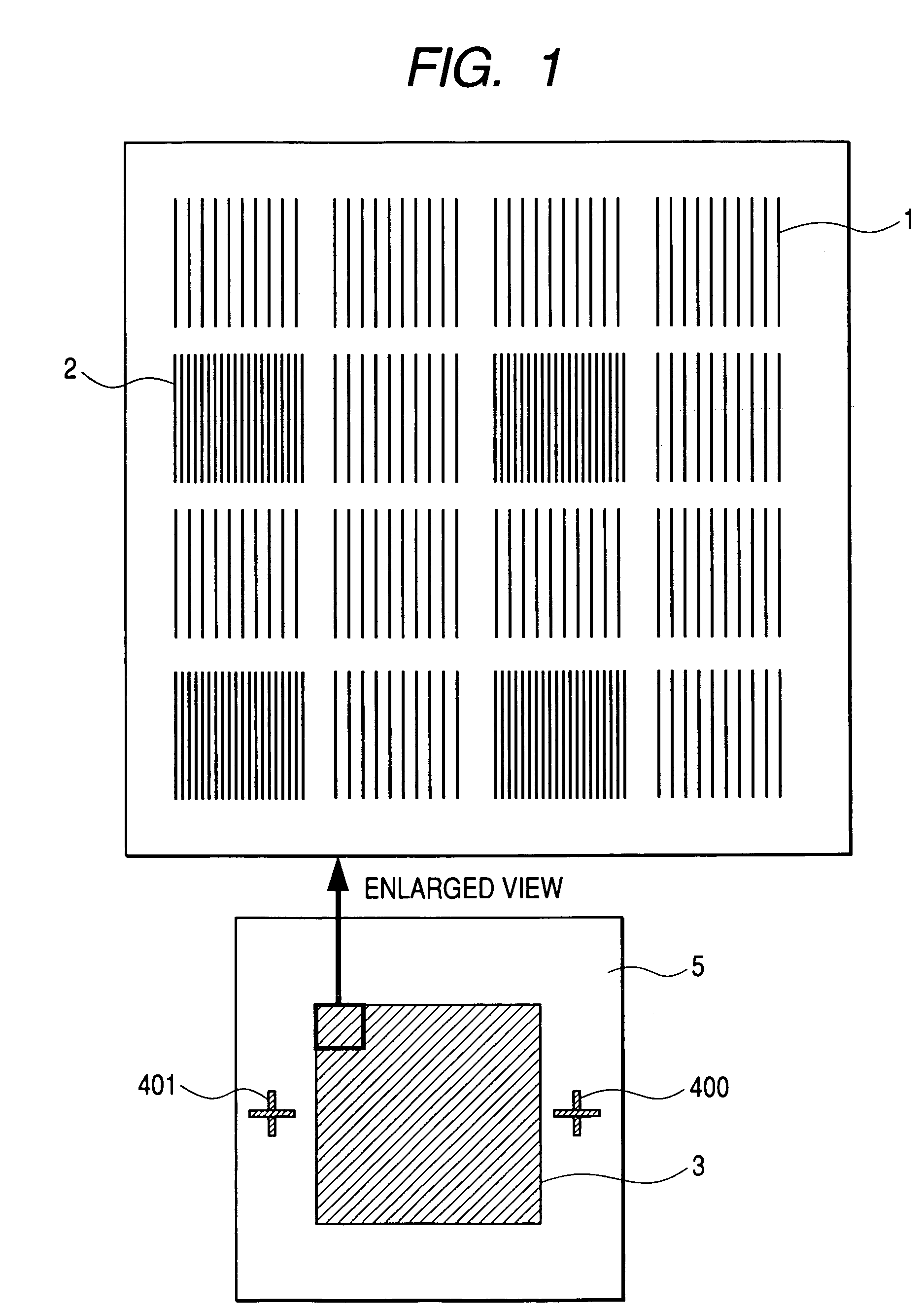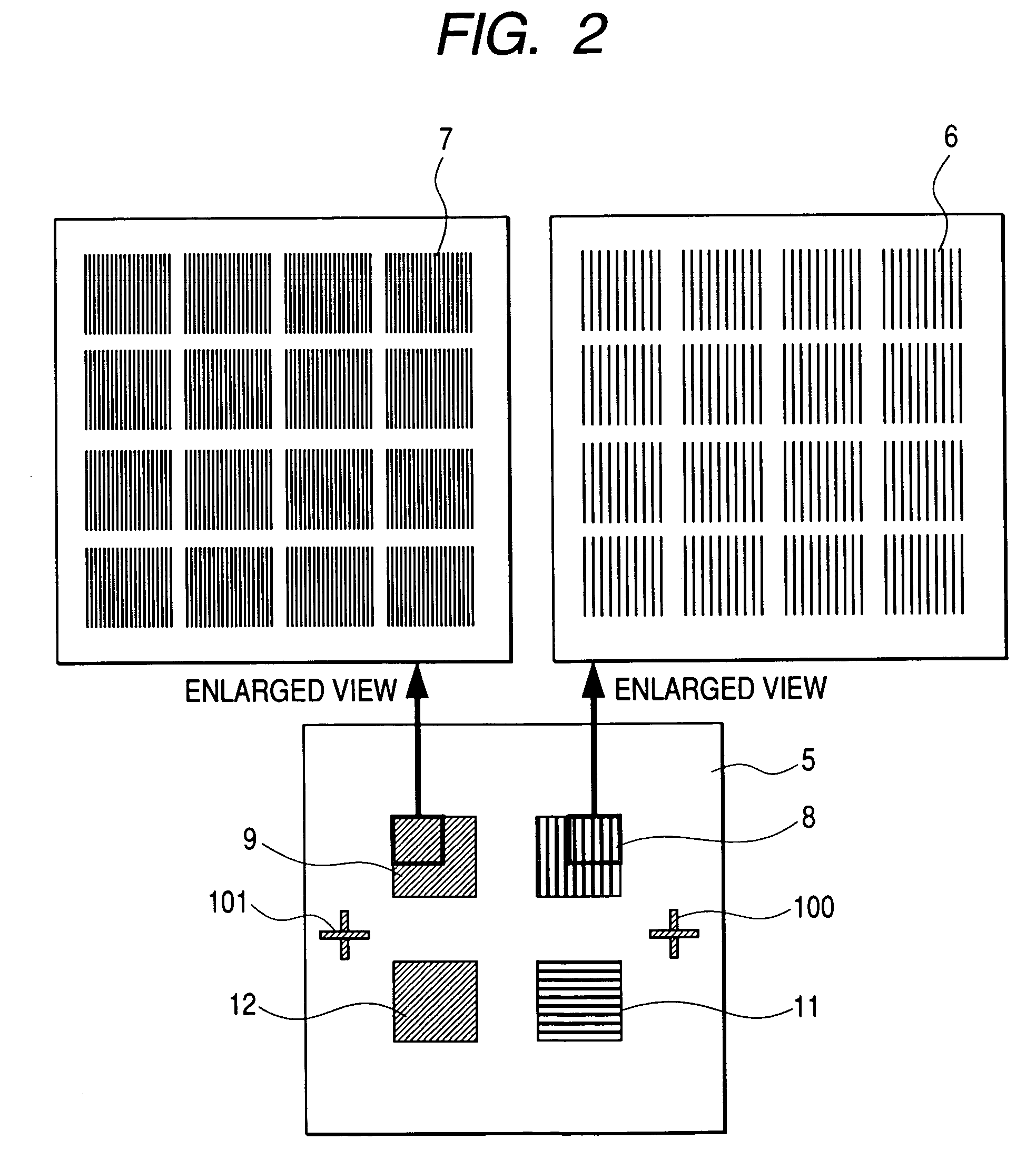Standard reference for metrology and calibration method of electron-beam metrology system using the same
a metrology system and electron beam technology, applied in the field of electron beam metrology, can solve the problems of difficult development, limit the accuracy of diffraction angle measurement of grating using laser beam for calibrating purposes, and the exposure device whose laser beam source is altered to a shorter wavelength involves many problems, and achieves the effect of high accuracy, unprecedented size calibration, and easy differentiation
- Summary
- Abstract
- Description
- Claims
- Application Information
AI Technical Summary
Benefits of technology
Problems solved by technology
Method used
Image
Examples
Embodiment Construction
[0038]Preferred embodiments of the present invention will be described in detail below with reference to accompanying drawings.
[0039]FIG. 1 through FIG. 5 show one example of standard reference for beam metrology according to the invention. FIG. 6 shows an example of standard reference for metrology for an electron-beam metrology system according to the prior art.
[0040]Conventionally, the trench pattern of unevenness on the semiconductor substrate of orientation (110) is prepared as a grating pattern 28 in a fixed direction by laser interferometer lithography and wet etching as shown in FIG. 6. The pitch of the grating pattern 28 is about 200 nm, and this value is obtained by diffraction angle measurement using a laser. The grating pattern 28 is formed all over a standard reference substrate 27 of 4 mm square. Calibration of an electron-beam metrology system using this reference substrate would involve the following problems.
[0041]The first problem concerns fineness. The latest semi...
PUM
 Login to View More
Login to View More Abstract
Description
Claims
Application Information
 Login to View More
Login to View More - R&D
- Intellectual Property
- Life Sciences
- Materials
- Tech Scout
- Unparalleled Data Quality
- Higher Quality Content
- 60% Fewer Hallucinations
Browse by: Latest US Patents, China's latest patents, Technical Efficacy Thesaurus, Application Domain, Technology Topic, Popular Technical Reports.
© 2025 PatSnap. All rights reserved.Legal|Privacy policy|Modern Slavery Act Transparency Statement|Sitemap|About US| Contact US: help@patsnap.com



